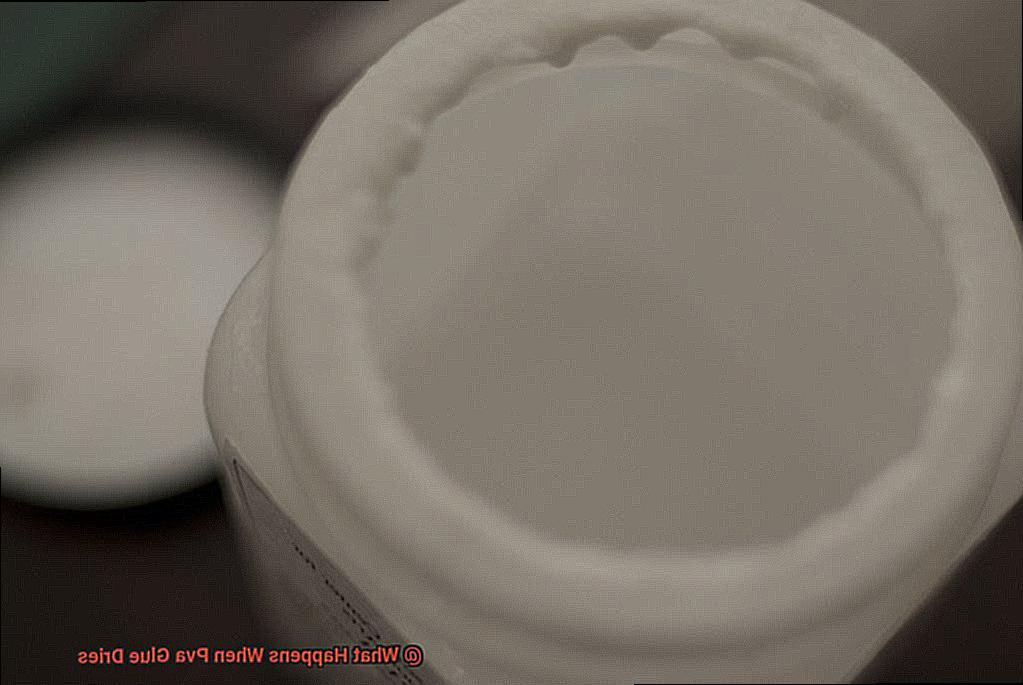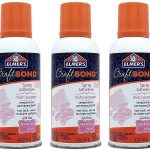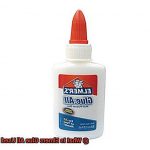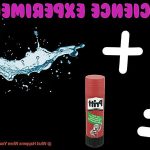Have you ever found yourself reaching for PVA glue when starting an arts and crafts project? It’s no wonder why – this adhesive is a staple in the industry. But have you ever stopped to think about what happens once it dries?
PVA, also known as polyvinyl acetate, is a water-based adhesive that’s used across various industries such as woodworking, papermaking, and packaging. Once applied, the glue goes through a process called ‘curing’, where it solidifies and becomes hard.
As the glue cures, water evaporates from it. This causes the polymers within the adhesive to tightly bond together resulting in a strong and durable grip that can withstand different types of stress like tension, compression, and torsion.
But PVA glue isn’t just strong – it’s also flexible and moisture-resistant. This makes it versatile enough for various applications like bookbinding, collage making, or even wallpaper adhesive.
So next time you reach for your trusty bottle of PVA glue during a DIY project or household repair job, remember that you’re using more than just any old adhesive. You’re using a reliable bonding agent that offers a sturdy and long-lasting hold.
What Is PVA Glue?
Contents
PVA glue, or polyvinyl acetate glue, is a water-based adhesive that has gained popularity in recent years due to its versatility and ease of use. It is made from a synthetic polymer that dissolves in water, allowing it to form a strong bond between surfaces. This non-toxic glue is commonly used in woodworking, paper crafts, and other DIY projects.
One of the unique features of PVA glue is its transparency. When it dries, it becomes clear and solid, making it an excellent choice for projects where appearance is important. Moreover, PVA glue dries quickly, usually within 30 minutes to an hour, depending on the thickness of the layer applied.
This adhesive can be used on a variety of materials including wood, paper, cardboard, and fabric. PVA glue is also popular in the construction industry for bonding drywall and other building materials. Its versatility makes it a popular choice for both DIY projects and professional settings.
To ensure a strong bond between surfaces when using PVA glue, it’s important to clean both surfaces thoroughly before application. This will help prevent any dust or grease from interfering with the bonding process.
How Does PVA Glue Work?
PVA glue, short for polyvinyl acetate, is a versatile adhesive that’s widely used in woodworking, crafting, and other DIY projects. When applied to a surface, it forms a white liquid film that dries clear as it evaporates. But how does it work its adhesive magic?
The secret lies in cross-linking. As the water in the glue evaporates, it leaves behind a solid adhesive that binds the two surfaces together. Imagine two puzzle pieces fitting together perfectly once the glue has dried. That’s how PVA glue works.
One of the great things about PVA glue is that it’s safe to use and non-toxic. You can use it for crafting with kids or in shared workspaces without worrying about health hazards. It also has a long shelf life and can be thinned with water to make it easier to apply and spread.
Another advantage of PVA glue is its versatility. Once it has dried, you can sand and paint over it, making it ideal for use in woodworking projects where a smooth finish is required. It’s like having an all-in-one adhesive and finishing solution.
However, keep in mind that PVA glue is not suitable for use in applications where it will be exposed to heat or moisture, as it can break down over time. So avoid using it for outdoor projects or anything that requires high-temperature resistance.
What Happens When PVA Glue Dries?
If you’ve ever used PVA glue before, you know just how magical it can be. But have you ever wondered what happens when PVA glue dries? As an expert on the subject, let me enlighten you.
When PVA glue is applied to a surface, it initially has a wet and sticky texture. However, after a certain amount of time, the glue will start to dry and undergo some changes in its physical properties. One of the first things that happen when PVA glue dries is that it becomes more solid and harder. The water in the glue evaporates, leaving behind a solid layer of adhesive on the surface. This is why PVA glue is commonly used for bonding materials together, as it creates a strong bond when fully dry.
But that’s not all. As PVA glue dries, it also becomes more transparent. When wet, PVA glue has an opaque white color, but as it dries, it becomes more and more transparent. This makes it ideal for use in applications where the glue line needs to be invisible or blend in with the surrounding materials.
In addition to becoming more transparent, as PVA glue dries, it also shrinks slightly in size. This can cause some issues in certain applications where precise measurements are needed. However, this shrinkage can also be helpful in filling small gaps or cracks in materials.
Finally, when PVA glue dries completely, it becomes relatively inert and stable. It will not break down or degrade over time unless exposed to extreme conditions such as high heat or moisture. This makes it a reliable and long-lasting adhesive option for many different types of projects.
The Drying Time of PVA Glue
Well, get ready to dive into a world of fascinating factors that can influence this process. As an expert on this topic, I can tell you that there are a variety of variables that can impact how long it takes for PVA glue to dry.
Firstly, the amount of glue you use is a crucial factor to consider. If you apply too much glue, it will take longer to dry compared to a smaller amount. Therefore, it’s important to apply just enough glue to get the job done.
Temperature and humidity levels are also important elements that can have an impact on the drying time of PVA glue. In hot and dry conditions, the glue will dry faster than in a cool and humid environment. However, it’s essential to be cautious about applying too much heat, as this can cause the glue to bubble and weaken its bond.
Another important factor is the type of surface you’re working with. Different surfaces may absorb or repel moisture, which can affect how quickly the glue dries. Therefore, be sure to select the right type of PVA glue for your project.
It’s worth noting that different types of PVA glue may have varying drying times. For instance, some PVA glues are specifically designed for woodworking projects and may take longer to dry than other types of PVA glues.
In general, PVA glue will dry within a few hours of application, but it may take up to 24 hours to fully cure. It’s crucial to wait until the glue is completely dry before handling or manipulating joined materials; otherwise, the bond may not be strong enough and could break apart.
If you’re looking to speed up the drying time of PVA glue, you can increase the temperature and decrease humidity levels in the room. However, it’s crucial not to overheat the glue as this can cause it to bubble and weaken the bond.
To ensure a strong and durable bond, it’s best to follow the manufacturer’s instructions for drying and curing time when using PVA glue. This will help you achieve your desired result without compromising the quality of your project.
Factors That Affect the Drying Time of PVA Glue
When it comes to crafting and DIY projects, PVA glue is a go-to adhesive for many. But have you ever found yourself frustrated by how long it takes to dry? As an expert on the topic, I’m here to tell you that there are several factors that can affect the drying time of PVA glue.
Firstly, let’s talk about humidity. PVA glue dries by evaporation, so high humidity levels can slow down the process, leading to a longer drying time. Conversely, low humidity can speed it up. Therefore, it’s important to work in an area with moderate humidity levels.
Temperature is another crucial factor. Higher temperatures can accelerate the drying time while cooler temperatures can slow it down. However, overheating the glue can weaken its bond, so be careful not to overdo it.
In addition to these external factors, the thickness of the glue layer can also impact drying time. The thicker the layer of PVA glue applied, the longer it will take to dry. This is because the moisture trapped inside takes longer to evaporate.
The porousness of your surface also plays a role. When PVA glue is applied to a porous surface like wood or paper, it can be absorbed into the material and take longer to dry.
It’s also important to consider the type of PVA glue you’re using. Different types have varying drying times and strengths, so make sure you read the instructions carefully before selecting your glue.
Finally, some manufacturers add additives to their PVA glues that affect their drying time. These additives can cause the glue to dry faster or slower than others.
How to Ensure a Strong Bond with PVA Glue
For a strong and reliable bond with PVA glue, there are several factors to consider. Let’s take a closer look at each of these factors to ensure the best results.
Clean Surfaces:
The first step to ensuring a strong bond is by ensuring that the surfaces to be bonded are clean and free from any dirt, dust, or grease. A dirty surface can prevent the glue from adhering correctly, resulting in a weak bond. Therefore, it is essential to wipe down the surfaces with a damp cloth and allow them to dry completely before applying the glue.
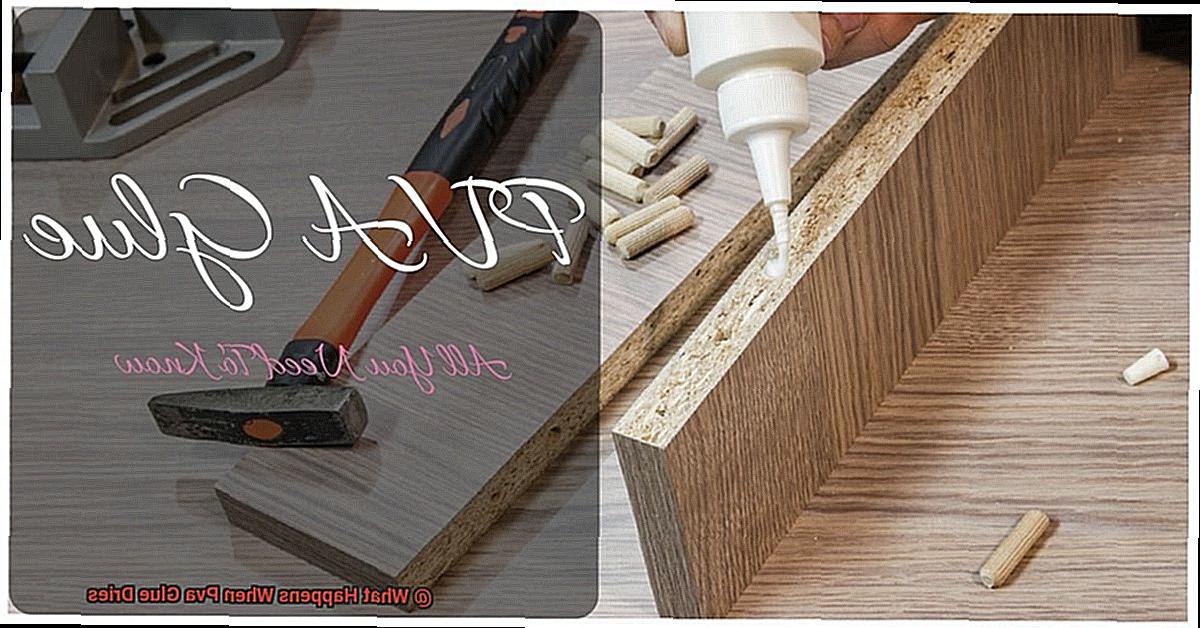
Apply Evenly:
Once the surfaces are clean, apply a thin layer of glue evenly across both surfaces. Applying too little glue can result in a weak bond, while using too much can cause the glue to seep out and create a mess. Therefore, it’s important to use just enough glue to cover the surface without overdoing it.
Drying Time:
Allowing the glue to dry completely before applying any pressure or stress to the bonded surfaces is crucial. This can take anywhere from a few minutes to several hours, depending on the type and amount of glue used. Rushing this process can result in a weak bond or even cause the joint to break apart.
Type of Material:
PVA glue works well on porous materials like wood, paper, and fabric. However, it may not be as effective on non-porous materials such as plastic or metal. In such cases, it may be necessary to use a specialized adhesive designed for those materials.
Temperature and Humidity:
PVA glue tends to dry best in warm, dry conditions, so it may be necessary to adjust the temperature or humidity levels of your workspace to achieve optimal results. High humidity can slow down the drying process and weaken the bond, while low humidity can cause the glue to dry too quickly and result in a brittle bond.
Proper Clamping:
Finally, proper clamping is crucial for ensuring a strong bond. The surfaces being bonded should be firmly pressed together and held in place until the glue has fully dried. This can be accomplished using clamps, weights, or even tape.
Benefits of Using PVA Glue
Look no further than PVA glue, also known as polyvinyl acetate glue. This versatile adhesive has numerous benefits that make it a top choice for many types of projects.
One of the most significant benefits of using PVA glue is its quick-bonding properties. When applied correctly, PVA glue creates a strong and durable bond between two surfaces, making it ideal for use in woodworking projects where strength is essential.
Another benefit of using PVA glue is its clear drying feature. Unlike other glues that leave residue or discoloration, PVA glue dries completely transparent, leaving a clean and professional-looking finish. This makes it perfect for use in projects where appearance is important, such as scrapbooking or card making.
Moreover, PVA glue has a low odor and is non-toxic, making it safe for all ages to use. Parents can breathe easy knowing that their children’s crafts or school projects don’t contain harmful fumes or chemicals.
Additionally, PVA glue is water-soluble, making it convenient to work with and minimizing the risk of damage to clothing or surfaces. You can easily clean up any spills or messes with just water while the glue is still wet.
Common Uses for PVA Glue
Allow me to introduce you to the versatile and superhero-like PVA glue, also known as polyvinyl acetate glue. This adhesive is a go-to choice for a multitude of applications due to its ability to bond both porous and non-porous materials, dry clear, and flex when it dries. Here are some of the most popular uses for PVA glue:
Arts and crafts enthusiasts swear by PVA glue. It’s perfect for projects where a clear finish is required, such as paper mache, collage, and decoupage. Plus, it’s non-toxic, making it a safe option for kids and adults alike.
Woodworkers appreciate PVA glue for its strength and durability when joining pieces of wood together. It can also fill small gaps in wood joints and seal wood pores before painting or staining.
Bookbinders love PVA glue because of its clear and flexible properties, which make it ideal for attaching endpapers, spine linings, and book covers to the text block.
Contractors rely on PVA glue for its fast-drying properties when bonding drywall, insulation, and ceiling tiles.
Last but not least, model-makers utilize PVA glue to attach parts together and create intricate landscapes and scenery. Its clear drying properties make it an excellent choice for projects where aesthetics are crucial.
IpaUHqaGoxI” >
Also Read: Can you use PVA glue to stick fabric to wood? – Glue Things
Conclusion
To sum up, PVA glue is a multi-purpose adhesive that has become a staple in various industries. Once applied, the glue undergoes a process called ‘curing’, where it transforms from a liquid to a solid state. During this process, water evaporates from the glue causing the polymers within it to bond tightly together resulting in a strong and durable grip that can withstand different types of stress like tension, compression, and torsion.
PVA glue is not only robust but also flexible and moisture-resistant, making it ideal for various applications such as bookbinding, collage making or even wallpaper adhesive. The drying time of PVA glue varies depending on several factors such as temperature and humidity levels, the amount of glue used and the type of surface you’re working with.
Overall, PVA glue offers numerous benefits such as its quick-bonding properties, clear drying feature, low odor and non-toxic nature. It’s commonly used in arts and crafts projects by enthusiasts of all ages due to its safety features. Woodworkers appreciate it for its strength and durability when joining pieces of wood together while bookbinders love it because of its clear and flexible properties. Contractors rely on PVA glue for its fast-drying properties when bonding drywall or insulation while model-makers utilize it to create intricate landscapes and scenery.
In short, PVA glue is an essential tool in any DIY enthusiast’s toolkit due to its versatility and reliability.

